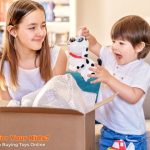Frequent size changes during early growth stages result in regular wardrobe turnover. This cycle can make fast fashion an appealing option due to its affordability and accessibility. However, clothing can serve a greater purpose beyond basic wear—supporting environmental sustainability, promoting ethical labour practices, and offering long-term value through durability and reusability.
Eco-friendly children’s clothing presents a solution that combines responsible production with functional and appealing design. These sustainable brands emphasize quality materials, ethical sourcing, and long-lasting construction—making them a worthwhile investment for reducing waste and encouraging mindful consumption.
Ethical Kids’ Clothing Brands That Truly Deliver
1. Patagonia Baby & Kids
Best for: Outdoor-loving families
Why it’s worth it: Patagonia’s commitment to sustainability runs deep—from using recycled polyester and organic cotton to offering a buyback program through Worn Wear. Their kids’ line is known for high-performance outerwear and play-friendly basics that can handle serious wear and tear.
Bonus: The resale value is incredibly high. That snowsuit might see four different winters and still look trail-ready.
2. Hanna Andersson
Best for: Soft, organic basics with fun prints
Why it’s worth it: Beloved by parents for its ultra-durable PJs and organic cotton clothing, Hanna Andersson has built a loyal following for good reason. Their garments are made to last and retain color and shape even after countless washes—something every parent appreciates.
Bonus: Their matching family sets are perfect for photos… or just chaotic Sunday mornings.
3. Mini Rodini
Best for: Bold prints with a conscience
Why it’s worth it: This Swedish brand is known for quirky, artistic designs and a no-compromise approach to sustainability. Most pieces are made from certified organic and recycled materials, and production ethics are front and center.
Bonus: Their statement designs are so unique, they often become collector’s items on resale platforms.
4. Pact
Best for: Affordable, sustainable everyday wear
Why it’s worth it: Pact is proof that eco doesn’t have to mean expensive. Using GOTS-certified organic cotton and fair trade factories, they offer a minimalist, mix-and-match line of baby and kids’ clothing at a price point that won’t make you wince.
Bonus: Their packaging is also 100% recyclable—because every little bit helps.
5. Boden
Best for: Classic British charm meets sustainability
Why it’s worth it: Boden’s kids’ line mixes traditional style with updated cuts and eco-conscious fabrics. Their clothes are made to be durable enough to pass down, and they have a growing commitment to sustainable sourcing and ethical labor.
Bonus: Their “Mini Boden” line is especially great for school uniforms and occasion wear.
6. Colored Organics
Best for: Cozy essentials with a heart
Why it’s worth it: This brand goes beyond just sustainable fabrics—they give back a portion of every sale to help children in need. All items are made with GOTS-certified organic cotton and nontoxic dyes, and their neutral palettes are perfect for capsule wardrobes.
Bonus: Ideal for kids with sensitive skin or allergies.
7. Finn + Emma
Best for: Ethical babywear that’s cute and clever
Why it’s worth it: This brand stands out with its whimsical designs and eco-conscious production using organic cotton, nontoxic dyes, and wood teething toys sourced from sustainable forests. Their footed onesies and graphic tees strike the perfect balance between playful and practical.
Bonus: Their products make thoughtful baby shower gifts for sustainability-minded parents.
8. MORI
Best for: Sleepwear and loungewear that lasts
Why it’s worth the investment: MORI offers exceptionally soft baby and toddler clothing crafted from a unique blend of organic cotton and bamboo. The brand’s zip-up sleepers are designed for convenience during nighttime changes, while the overall quality is comparable to that of premium luxury labels.
Bonus: Their minimalist style makes hand-me-downs a breeze—gender-neutral and timeless.
9. Frugi
Best for: Colorful designs with purpose
Why it’s worth it: UK-based Frugi blends fun, bold patterns with ethical manufacturing. Their clothes are made from organic cotton and packaged sustainably, and they donate a portion of their profits to charitable causes.
Bonus: Sizes go up to 10 years, so you can stick with the brand as your child grows.
10. Tea Collection
Best for: Global-inspired prints with eco impact
Why it’s worth it: Inspired by world cultures, Tea Collection’s designs are vibrant and unique, and they use sustainable cotton and responsible manufacturing practices. Their mission also includes giving back to educational programs for children worldwide.
Bonus: Their mix-and-match sets make morning routines easier—and more stylish.
Where to Resell or Shop Pre-Loved Eco Kids’ Clothes
Not only are sustainable kids’ clothes more durable, but they’re also hot commodities on resale platforms. When your child inevitably outgrows their favorite organic hoodie or bamboo sleeper, you can give those garments a second life—and get some of your money back in the process.
Here are some standout resale platforms that focus on eco or high-quality kids’ clothing:
- Kidizen is a community-driven marketplace designed for the exchange of gently used children’s clothing, offering both buying and selling opportunities. Many sellers specialize in eco-friendly brands like Hanna Andersson, Mini Rodini, and Tea Collection.
- ThredUP: One of the largest online consignment stores, ThredUP carries a wide selection of popular sustainable brands and makes it easy to clean out your closet (they’ll even send a Clean Out Kit).
- Facebook Marketplace & Buy/Sell Groups: Look for local eco-mom groups or “Buy Nothing” communities. They’re great for scoring sustainable hand-me-downs or passing along quality pieces.
- Mercari and Poshmark are peer-to-peer platforms that offer a wide selection of secondhand items, including brands like MORI, Frugi, and Patagonia Baby, often available at reduced prices compared to retail.
Pro tip: When reselling, always include the brand name and keywords like “organic cotton,” “GOTS-certified,” or “eco-friendly” to attract conscious buyers.
Building a Sustainable Capsule Wardrobe for Kids
The “capsule wardrobe” concept has seen increased popularity in recent years, offering practical advantages that extend beyond mainstream adult fashion trends. When applied to children’s clothing, a streamlined wardrobe can reduce laundry loads, minimize mismatched items, and encourage more deliberate, mindful purchasing decisions.
Here’s how to build one:
- Choose a core color palette: Stick to 3–5 coordinating colors that can mix and match seamlessly.
- Prioritize quality over quantity: Invest in fewer, higher-quality items that can survive playtime, naps, and spaghetti night.
- Think layers: Opt for pieces that transition through seasons—like bamboo rompers that double as sleepwear or organic cardigans that layer well.
- Include multi-purpose items: Think gender-neutral basics, reversible jackets, or convertible pieces like pants that roll into shorts.
By keeping it minimal and versatile, you’ll not only save closet space but also reduce waste and make mornings a whole lot easier.
Caring for Eco-Friendly Fabrics (and Making Them Last Longer)
Investing in high-quality, sustainable materials such as organic cotton, bamboo, and hemp calls for mindful fabric care to ensure longevity. These eco-friendly textiles are naturally gentle and environmentally responsible, but proper maintenance enhances their durabilityInvesting in high-quality, sustainable materials such as organic cotton, bamboo, and hemp calls for mindful fabric care to ensure longevity. These eco-friendly textiles are naturally gentle and environmentally responsible, but proper maintenance enhances their durability.
- Wash Cold: Using cold water helps preserve the structure of natural fibers while effectively removing dirt and stains. Higher water temperatures may speed up fabric wear and contribute to increased energy usage.
- Air Dry When Possible: Air drying helps retain fabric color, supports elasticity, and minimizes shrinkage. This approach also reduces energy use and prolongs garment lifespan.
- Use Gentle Detergents: Biodegradable, fragrance-free detergents assist in preserving fabric softness and help minimize potential chemical residue or skin irritation.
- Avoid Harsh Chemicals: Bleach and fabric softeners can weaken organic materials and reduce the long-term durability of garments.
- Promote Sustainable Habits: Simple laundry routines can be used as opportunities to support awareness of sustainability, textile care, and environmental responsibility from an early age.
Budget-Friendly Ways to Embrace Eco Kids’ Fashion
Let’s be real, sustainable kids’ clothing sounds ideal until you’re staring at a $42 organic cotton romper your baby might outgrow before the next laundry cycle. While eco-friendly fashion often comes with a higher upfront cost due to ethical production and quality materials, it doesn’t mean it’s out of reach for families on a budget. With a few smart strategies and a little community magic, you can build a stylish, sustainable wardrobe for your little one—without draining your savings.
Here are a few parent-approved, wallet-friendly ways to go green:
1. Buy Gender-Neutral Basics
Opting for neutral tones and simple designs isn’t just a style choice—it’s a sustainability hack. Earthy hues, classic patterns, and unisex cuts make it easy to reuse clothing between siblings, cousins, or friends regardless of gender. Think oatmeal-toned onesies, olive joggers, or striped long-sleeve tees that look just as cute on any kid. Not only does this reduce waste, but it maximizes the mileage of every item you buy.
Pro tip: Brands like Colored Organics and MORI offer timeless gender-neutral collections that are perfect for building a hand-me-down wardrobe.
2. Shop End-of-Season Sales (and Size Up!)
Eco-friendly brands often run amazing sales when they’re clearing out seasonal inventory. The trick? Shop ahead. Buy winter jackets in spring and swimsuits in fall, and always size up so your child can grow into the pieces. A slightly oversized hoodie today might be the perfect fit by the time next season rolls around.
Bonus points: You’ll often find high-ticket items like jackets or sleepwear at up to 50% off—and these are usually the most durable pieces worth investing in.
3. Host a Clothing Swap
A stack of barely-used onesies that no longer fit is a common sight in many households. Hosting a clothing swap within a local community, school, or parent group offers a fun and cost-free solution for updating a child’s wardrobe. Another family likely has the needed size, such as a 2T raincoat, while items like a 12-month romper can find a new home with someone whose child has just reached that stage.
Make it fun: Add snacks, create a sorting table by size, and maybe even include a little eco-chat to share favorite sustainable brands and hacks.
4. Follow Your Favorite Brands on Social Media and Sign Up for Newsletters
Brands like Hanna Andersson, Pact, and Mini Rodini often announce flash sales, discount codes, or exclusive early access deals through their Instagram pages or email newsletters. Staying in the loop can help you snag eco-friendly pieces before they sell out—or before prices jump back up.
Quick hack: Create a “shopping-only” email folder so these promos don’t clutter your main inbox but are still there when you need them.
5. Explore Online Resale Platforms
Gently used sustainable kids’ clothing is a goldmine—and way easier to find than you’d think. Platforms like Kidizen, ThredUP, Facebook Marketplace, and even eBay often have high-quality, pre-loved pieces for a fraction of the original price. Search by brand names or terms like “organic cotton” or “GOTS-certified” to find eco-friendly gems.
Pro tip: Some brands even have built-in resale programs, like Patagonia’s Worn Wear or MORI’s pre-loved marketplace. You’ll save cash and shop directly within the brand ecosystem.
6. Embrace a Capsule Wardrobe Mindset
A minimal wardrobe offers practical benefits, reducing clutter and promoting intentional clothing choices. A well-curated collection of versatile, mix-and-match garments ensures functionality across seasons and occasions. Prioritizing quality pieces that layer easily and coordinate in color minimizes unnecessary purchases and simplifies daily outfit planning.
A practical starting point includes 3–4 bottoms, 4–5 tops, 2 outerwear items, and a few accessories in a cohesive color palette. This approach allows for numerous outfit combinations while maintaining a compact and efficient wardrobe.
7. Care for Clothes to Extend Their Life
Proper garment care can extend the lifespan of children’s clothing, enhancing the durability of even more affordable pieces. Wash in cold water, hang dry when possible, and use gentle, nontoxic de
tergents. Treat stains quickly and mend little tears before they become big ones. The better you care for garments, the more likely they’ll survive the playground—and be ready for the next kid in line.
Dressing Kids, Shaping Values
Choosing eco-friendly kids’ clothing isn’t just about reducing landfill waste or skipping toxic dyes—it’s about modeling mindful habits for the next generation. When kids see their parents making thoughtful choices—reusing, recycling, shopping small—they learn that clothes are more than just things. They’re tools for expression, comfort, and even activism.
In a world of fleeting trends and overflowing toy bins, opting for sustainable, well-made clothing is a small but powerful choice. Whether you’re buying brand new from Frugi or scoring a gently-loved Hanna Andersson pajama set off Kidizen, you’re part of a movement that values quality, care, and conscious living.
So go ahead—invest in those soft organic joggers or that ethically made raincoat. You’re not just dressing your kid—you’re shaping their values, one button-up at a time.



